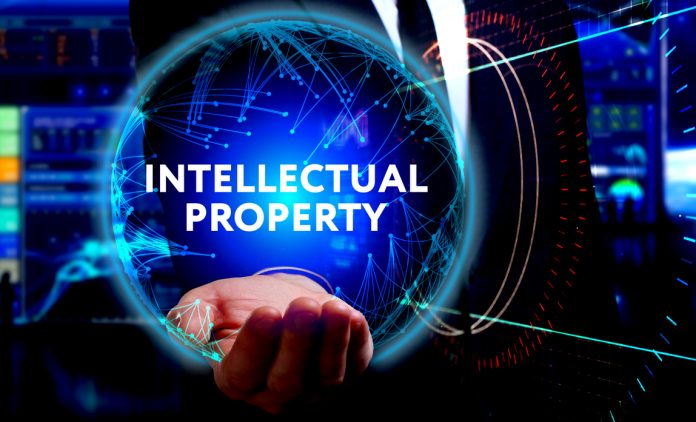This article was written by Rudra Mahendra Lad, pursuing the Diploma in Advanced Contract Drafting, Negotiation, and Dispute Resolution, from LawSikho, and edited by Koushik Chittella.
This article has been published by Shashwat Kaushik.
Table of Contents
Introduction
Intellectual property rights consider the protection of ideas of intellectual minds. The rights license the work of creative minds and protect them. This article will discuss the contracts for intellectual property licensing and many other related matters. First of all, let’s know what intellectual rights are; they protect the mind behind innovation, inventions, symbols, drama, artistic & literary work, and many more. The main objective of intellectual property is to protect innovative work and create its licenses for further permission of usage. An explicit recognition will be given to the producers who curate the inventive work.
Importance of IP management
There must be a strategy to benefit from IP licenses. The management of IP is more necessary to spread the wide web of IP licenses and create revenue from it. Additionally, IP licenses are also surrounded by risks, infringements, and violations of rights. The effective management of intellectual property is also crucial for fostering innovation and maintaining a competitive edge in today’s fast-paced world. Proper IP management ensures that creators and inventors are duly recognised and compensated for their work, thereby encouraging the continuous development of new ideas and technologies. It also protects against infringement, ensuring that businesses can safeguard their unique products, services, and processes from unauthorised use. Furthermore, well-managed IP assets can be leveraged for strategic business growth, including licensing opportunities, partnerships, and attracting investment. So, the licensing agreements must align in a customised way with business motives, new opportunities in the market, and technology.
Categories of IP
There are various categories of intellectual property rights; they are:
- Trademarks: They are governed by the Trademarks Act, 1999. It protects the slogans, names, and symbols. Trademarks make the product more identical so that the product becomes unique from others.
- Copyrights: They are governed by the Copyright Act, 1957. It includes musical, artistic, literary, books, drama, films, etc. A copyright holder can give a license to present the work & perform it in public.
- Designs: They are governed by the Designs Act, 2000. Design encompasses the features of shape, pattern, configuration, ornament, or composition of colors or lines, which can be applied in either three-dimensional or two-dimensional forms, or both. These features are created using various processes, whether manual, chemical, mechanical, uniquely different, or combined. The final design is intended to appeal to or be judged solely by the eye.
- Patents: They are governed by the Patents Act, 1970. A patent is a type of intellectual property right that protects the right of the owner of an invention to exclude others from making, using, or selling it for a limited period in exchange for publishing the disclosure of the invention. In most countries, patent rights fall under private law, and the patent holder must sue someone infringing the right to enforce their intellectual property.

- Geographical Indications: It is governed by the Geographical Indications of Goods (Registration and Protection) Act, 1999. It refers to the goods produced from specific places and their protection.
- Trade Secrets: There is no separate law for trade secrets in India. It secures business secrets to provide a competitive edge, such as ideas, structures, practices, etc. The owners of the IP rights are keen to enable monetisation of the rights so that the owners of the rights will get the reach of their innovative content. This gives major reach to the license owner as a licensor; contracts come into the picture to formulate the rights and the obligations of the licensee about which right the IP licensor is permitting the licensee to use, limitations, and the extent of usage.
Each category of intellectual property rights plays a crucial role in monetising the rights after licensing the right and being used by the licensor to the licensee, the IPR Agreement, is comprised of strong clauses to protect the parameters of IPR such as the grant of a license, financial terms, royalties, duration and termination, quality control, intellectual property ownership, confidentialities, warranties and representations, indemnity, and liability, dispute resolution.
Franchising Agreement
The franchisor’s business model is given to the franchisee to use as per the standards of the franchisor. This is another way to distribute the licensing to another party. The franchisor ensures the manpower, skills, product, method of production, outlet direction, and other relevant aspects driven by the franchisor are considered while licensing it. Such as there are joint venture Agreements for common business purposes and are known for the perfect collaboration of the business that can be of ownership and service or both with the same range with two parties Marchande licensing is another form of IP Licensing that allows the use of the mark of the owner by avenuing the right to use to the licensee and to enhance the product quality. These are also the same in the chain but have different characteristics adhering to their business line.
Overview of licensing agreement
A licensing agreement refers to the permission granted by the licensor to the licensee about the IPR and their detailed obligations, which the licensee needs to keep in mind and follow accordingly. Here are key points that have to be included in a licensing agreement:
- Parties Involved: The agreement should contain the details and contact information of the licensor and licensee. It must be confirmed that the ability or legal quality to enter into the contract means the legal capability, as the aspects of legal capability should be fulfilled to enter into a valid contract.

- The type of licensing agreement has to be included. The various types of licensing agreements include:
- Exclusive: Here in this, the licensee has the right to use IP, not Licensor.
- Non-exclusive agreements: Licensors can enjoy rights and also grant them to others.
- Sole Agreement: The licensee and licensor have rights to use IP, but the licensor cannot grant the right to others.
- Financial Terms: The methods of payment of royalties, first payments, audits, and guarantees should be included in the agreement.
- Term or Duration: Here, the term and renewal of the duration of the license ownership must be mentioned in the agreement.
- Quality Control: In this, the licensor can ensure the quality standards of the products for which IP rights are mentioned. The licensor can also expect to confirm the compliance of the process that the licensee is practicing. Also, clauses like dispute resolution, miscellaneous, intellectual property right protection, warranties, etc.
Common difficulties in IP Licensing
The common difficulties in IP licensing include:
- Management of licensees and their businesses: When the business model is different, then it becomes difficult to circumvent the rights of the licensor as per his convenience.
- Anticipating the actual value of intellectual property: It’s difficult to identify the equivalent price of the right as per the market value.
- Negotiations while making the payments: The payments, royalties, and compensations can be contemplated points while negotiating and agreeing on the same page by both parties.
- Resolving Mechanisms if a dispute arises: In the licensing agreement, the points of royalty, payments, IP use, and compliance issues can arise, so therefore, it is possible to raise the intricacies regarding the scope of work.
- Taking care and finding out the violation of licenses: Identifying the breach of contract is difficult, especially in faraway jurisdictions where nobody can apprehend a search regarding the breach.
Case Studies
Following are some of the case studies regarding IP licensing:
- Tech License of IBM & Microsoft: In the 1980s, Microsoft established itself as a leading expert in operating systems. IBM, which did not develop its own operating systems, sought Microsoft’s expertise. Consequently, IBM and Microsoft formed an exclusive partnership, and Microsoft provided an enhanced operating system under license for IBM’s use. This collaboration significantly contributed to the rapid growth and success of both brands
- Spotify & Music Labels Copyright Licensing: Spotify made contracts with different music streams to play their music on the Spotify Platform; the non-exclusive license has been made, which means various streams can license the music as well as Spotify so. Spotify paid royalties based on the songs streamed. This gave the outcome of royalty fees, a platform for artists and singers, and revenue generation as well.
- Disney & Merchandise Magic, the trademark licensing: Disney has created the licenses of the characters of Disney such as Jimny Cricket, Sebastian, Genie, & Mickey Mouse. Disney made nonexclusive licenses between merchandise producers and paid royalties on the sales outcome of these Disney characters.

Conclusion
The compliance of contract and intellectual property rights is a demonstration of the energetic relationship between legalities and business laws. Geographical indications, copyright, and trade secrets have global revenue in the range of 50, 60, and 70 USD billion. Globally, royalty payments for patent licensing exceed USD 35 billion. In a world propelled by innovations and technologies, navigating the complexities of protecting intellectual property is crucial. Therefore, the licensing agreement emerges as a fundamental aspect in this landscape. Each type of right requires a unique type of licensing. The licensing agreements with upfront payments, royalties, and audit mechanisms play a crucial role in the relationship between the licensor and the licensee. Intellectual property licensing is the bridge between the business market and innovation. The IPR field is lucrative for a legal representative to leverage their knowledge into this career and render effective licensing, dispute resolution, and compliance services to the people. The licenses provide a wide way to transform creativity in brilliant minds and expand it.
References
- https://blog.ipleaders.in/ip-licensing-agreements/
- https://ipindia.gov.in/
- How IBM changed their licensing model and what it means for you as a customer | SoftwareOne Blog
- Spotify and Licensing: What’s the whole deal about? (theipmatters.com)
- Disney’s Intellectual Property Rights in Licensing and Merchandising: A Magical Business Strategy #PrityKhastgir #WRC23 #MagicalBusinessStrategy | LinkedIn
- https://www.icsi.edu/media/webmodules/FINAL_IPR&LP_BOOK_10022020.pdf
- https://pestalozzilaw.com/media/publications/documents/A_Look_to_the_Future_of_International_IP_Arbitration.pdf
- https://www.lawyersclubindia.com/articles/A-critical-evaluation-of-the-Patent-Amendment-Act-2005-5574.asp
- https://www.casemine.com/act/in/5a979e024a93263ca60b77c4
- https://blog.ipleaders.in/an-overview-of-the-copyright-act-1957/
- https://blog.ipleaders.in/design-act-2000/
- https://www.indiacode.nic.in/handle/123456789/1981?sam_handle=123456789/1362
- https://blog.ipleaders.in/laws-protection-trade-secrets-india/
 Serato DJ Crack 2025Serato DJ PRO Crack
Serato DJ Crack 2025Serato DJ PRO Crack









 Allow notifications
Allow notifications



